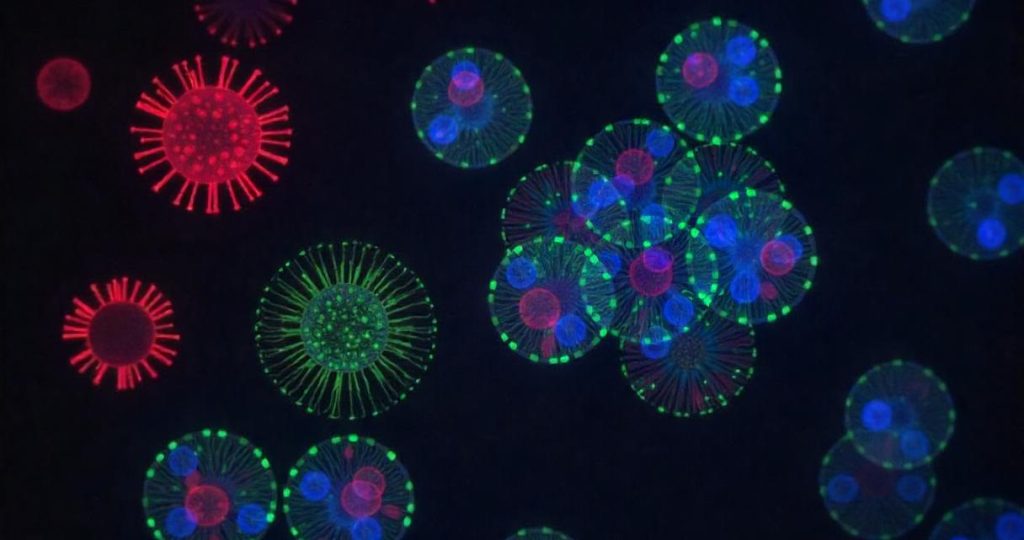Medically Reviewed By Vikas Londhe M.Pharm (Pharmacology)

Introduction
In a breakthrough that bring together virology, immunology, and genetic engineering, researcher from State Key laboratory of Targeting Oncology, China have developed a novel oncolytic therapy using a genetically modified Newcastle Disease Virus (NDV) that tricks the immune system into treating cancer cells as if they were foreign organ transplants. This approach, which uses the body’s natural “hyperacute rejection” mechanism typically seen in organ xenotransplants, showed notable results in early clinical trials for patients with advanced, treatment-resistant cancers.
Hyperacute rejection is a type of organ transport rejection that happens within minutes to hours after the transplant. It occurs when the recipient’s immune system already has antibodies that quickly recognize the new organ as foreign and attack it. This rapid immune response causes severe damage to the transplanted organ, often leading to its failure almost immediately.
Xenotransplant is a medical procedure where cells, tissues, or organs are transplanted from one species to another for example, transplanting a pig’s heart into a human.
The Innovation: NDV-GT and the aGal Trigger
The therapy uses a recombinant NDV that expresses the porcaine α1, 3-galactosyltransferase (a1, 3GT) gene, resulting in the presentation of αGal antigens on infected tumor cells. In humans, the αGal antigen is recognized as foreign due to the evolutionary loss of the α1, 3GT gene. Our immune systems naturally produce large amounts of anti-αGal antibodies, primarily from exposure to gut microbiota. This makes the immune system especially reactive to any cell displaying αGal.
By engineering NDV to express this foreign antigen on tumor cells, scientists effectively turned cancer cells into targets of a powerful immune cascade similar to organ rejection. This results in rapid tumor destruction through complement activation, thrombosis, and immune cell infiltration.
Preclinical Success in Monkeys
Using CRISPR-Cas9 technology, the researcher created a realistic liver cancer model in cynomolgus monkeys. The intravenous administration of NDV-GT in these monkeys led to remarkable tumor regression with many tumors disappearing entirely. The therapy not only lysed the cancer cells but also caused thrombotic blockage of tumor blood vessels mimicking hyperacute rejection seen in xenograft failures.
Immune profiling revealed activation of both innate and adaptive immune responses, including CD4+ and CD8+ T cell infiltration, increased expression of granzyme B and perforin, and reduced tumor angiogenesis markers. Importantly, no significant toxicity or organ damage was observed.
Clinical Trial Results
In a phase I interventional clinical trial (ChiCTR2000031980), 20 patients with various advanced, treatment-resistant cancers, including liver, lung, rectal, esophageal, breast, and cervical cancer and melanoma, were treated with intravenous NDV-GT. The results were prominent:
90% Disease Control Rate (DCR): 1 complete response, 6 partial responses, and 11 cases of stable disease.
No severe adverse events: Mild side effects, no cytokine release syndrome, and no detectable viral shedding.
Durable response: Severe patients experienced long-term stabilization o remission lasting up to 36 months.
One standout case involved a patient with advanced hepatocellular carcinoma and lung metastases. After 1.5 months of NDV-GT treatment, most tumors had disappeared, and serum tumor markers dropped significantly. Another patient with metastatic ovarian cancer achieved a partial remission for over a year.
Mechanism of Action
NDV-GT’s effectiveness lies in its dual mechanism :
Direct Oncolysis: NDV naturally prefers and destroys tumor cells while sparing healthy ones.
Immune Amplification: The engineered Gal expression triggers complement-mediated cytotoxicity and T-cell driven immune cascade, simulating a rapid rejection response that targets the tumor as a foreign organ.
This dual action also alleviated the immunosuppressive tumor microenvironment, making tumors more susceptible to further immune attack.
Safety and Implications
Despite the robust immune activation, NDV-GT treatment was well tolerated. No significant increase in neutralizing antibodies or adverse immunogenic effects was observed. The lack of toxicity and the specific targeting of tumor tissue underscore its promise for broader clinical use.
Conclusion
NDV-GT represents a groundbreaking shift in oncolytic virotherapy. Bby mimicking a hyperacute rejection response. This therapy turns the body’s natural defense mechanism against tumors in a way that is both powerful and safe. As phase II-III trials are being prepared, this immune- tricking virus could redefine treatment paradigms for refractory and metastatic cancers.
Reference
1. Liping Zhong, Lu Gan, Bing Wang et al, Hyperacute rejection-engineered oncolytic virus for interventional clinical trial in refractory cancer patients, Cell, Volume 188, Issue 4P1119-1136.E23February 20, 2025.
2. Tricking the Immune System: A New Approach to Targeting Cancer Cells by Mimicking Pig Organs, Insight, 22 Jan 2025, available from https://oncodaily.com/insight/immune-system-229351

